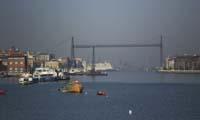Develop procedures for the control of urban and industrial landfills

Study the ecological status in different areas to test the procedure
Using biomarkers, bioassays and indicators of ecological status, the company Fulcrum de Leioa has developed a procedure to know the state of the littoral water masses that receive urban and industrial waste. To carry out the research he has had the research team of the UPV in Cellular Biology in Environmental Toxicology, the IH Cantabria Foundation and the CSIC. The objective of the work has been to be able to evaluate the biological effects of potentially dangerous discharges for the ecological state of the water masses.
The areas affected by urban waste spills (Santander and Gijón) and estuaries (Sestao), industrial spills (Ferroatlántica de metalurgia and Trash Sniace) and port spills (Arriluze marina, Pasaia freight port and mixed spill of the port of Santander) have been selected as working areas of the project.
Different tests and measurements have been carried out in all these areas. Mussels have been taken to research centres as monitoring bodies to carry out exposure trials and ecological status indicators have been analyzed. Subsequently, several biomarkers have been studied in mussels and bioassays have been made to know the toxicity of sediments in these areas. On the other hand, a computer tool has been developed for the modeling of discharges and the definition of mixing foci, performing chemical analysis of mussels, water and sediment.
Among the results obtained is the good state of the areas affected by spills through sinks and the worsening of the rest. They have also found toxicity in the sediments that collect the discharges of the company Ferroatlántica and the port of Santander, as well as in the sediments of Peñarrubia, the bay of Santander and the port of Arriluze.
Apart from the results obtained, the sensitivity, specificity and suitability of the techniques used in the trials have been analyzed. They have seen that its implementation in future hydrological plans is feasible as it meets the requirements of the Water Framework Directive.





